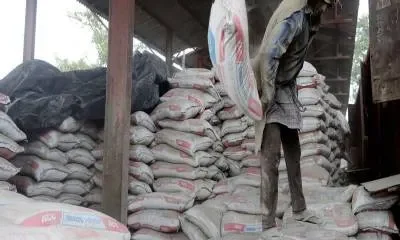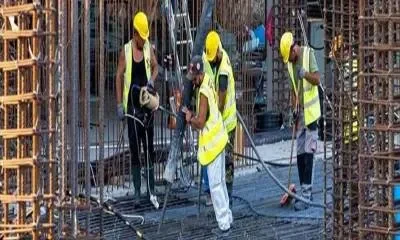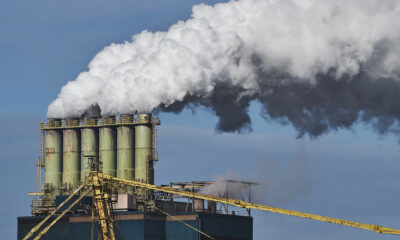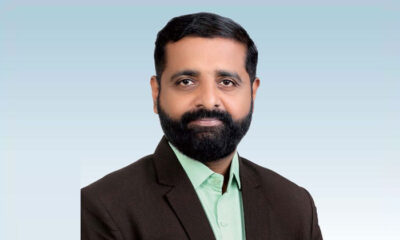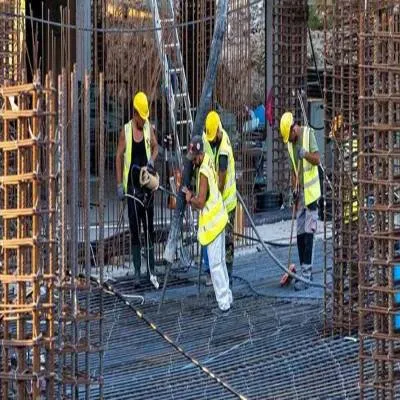VN Balasubramanian, Director – Head BU Polysius India, thyssenkrupp Industries India (tkII), discusses the various factors challenging Indian cement sector’s fight against carbon emissions and the role technology partners play in the larger scheme of things.
BU Polysius has been in existence for over 150 years and has grown from a family-owned brand to a conglomerate. The philosophy of the Polysius group has always centred on quality, reliability and performance. India is a very price sensitive market, but as a group, thyssenkrupp Polysius is driven by the quality and ruggedness of German machinery. Their products may not be the cheapest in terms of price, but are amongst the best in quality. They do not believe in slashing their prices and compromising quality.
Major cement players from the Indian cement industry have relied on thyssenkrupp Polysius and have added multiple lines over the years. In addition, several new customers have also placed orders on Polysius in the recent past. Between 2010 and 2020, tkII Polysius have built 22 Pyro lines, which is a testimony to the reliability, quality of the equipment and service focus for the customer.
Reducing Carbon Footprint
Carbon footprint reduction in the Indian cement industry is not yet a mandatory norm like in the west but the mandates are round the corner. The Indian cement industry has strict guidelines on noise and dust emissions, which they have admirably complied with. There are guidelines on SOx and NOx emissions but no penalties yet for carbon emissions. But the awareness has surely increased. Outside India, BU Polysius have come up with a lot of green technology initiatives for reduction in use of fossil fuels, utilisation of activated clay etc. There are plants in Europe operating on 100 per cent alternative fuel and raw materials (AFR) with equipment supplied by BU Polysius. This has twin advantages of reduction of carbon emissions as well as operational cost advantages to the customers. Polysius offers a complete solution for AFR handling from the collection point to feeding in the calciner with assurance of total substitution rate (TSR) and throughput. The solution is field proven, with several operating references and highly beneficial to the customer and of course, the environment in the larger scheme of things.
In India, the AFR usage is around 15-25 per cent and is very fragmented. The main hurdle in achieving higher TSR rates is the supply chain to ensure continued availability of the waste of the right quality. Secondly, many plants are not AFR ready. However, this trend is changing for the better now with customers insisting on designing AFR-ready plants.
Apart from the standard ISO specifications that they adhere to and following the DIN standards for designs that are based out of Germany, all their equipment are initially designed in Germany and horizontally deployed in India. Hence, the thyssenkrupp India team does not copy, only improvise/ modify to match Indian conditions, get their approvals for BU Polysius and move forward. The vetting is a mandatory process for maintaining standards and reason for higher costs of their products. Every big and small equipment is DIN standard specified and over a period they are vetted. tkII workshops are approved by BU Polysius Germany Quality experts, who also carry out periodic inspections to ensure quality standards.
Customer Complaints at tKII are accorded top priority and resolution within a fixed period is an absolute must. They have a standard four-eyed principle for offer and design submission, vetted by a minimum of two people to avoid any errors.
thyssenkrupp BU Polysius India Global Engineering Centre is one of the two centres in the world, catering to plant design for BU Polysius Germany for their global projects. It comprises handpicked designers trained by Polysius Germany to deliver top class quality on rigid timelines. To maintain the high standards, German experts constantly evaluate and upgrade the skills of the team.
Role of Automation and Technology
Operating costs are constantly on the rise. The goal is to reduce the production cost to the best possible extent for the customers. In the former days, there used to be about 800 people working in a cement plant and today it has been reduced to less than 250 in India. Similar plants overseas operate with less than 100 personnel. This has been possible largely due to digitalisation and automation. The trend is gradually gaining pace in the Indian cement industry as well. Manual intervention in inspection and operation not only increases the cost but also the probability of errors. Today automation is not just a buzzword but the need of the day.
For example, their R&D Centre in Germany can evaluate the real time performance of a Polysius plant in India or any corner in the world without physically visiting. It, of course, comes at a price but with proper planning in the early stages of the project, the cost is negligible. It is possible even in operating plants of any make. The cost incurred vis-à-vis advantages of an automated solution is a no brainer.
Developing a digitalised solution for improving operational efficiency is a challenge, and there are many players in the market but with thyssenkrupp Polysius, the added advantage is the knowledge
of process technology that comes along. Thus, the output from their automation solutions are more precise and accurate, which are accompanied by precise recommendations.
Regarding polab® laboratory automation, Polab stands for POLYSIUS Laboratory. It is one of the most automated and reliable products in the market today. It is a step towards the future where it cuts out personal and human intervention. With the POLAB, samples are collected automatically from every stage of the production line, transported to the lab and results delivered within a few minutes and correction is carried out online.
Earlier cement plant laboratories used to have 6-8 people in a shift and at least 10-12 in the lab for the physical and chemical testing. Now, the POLAB carries out the tests automatically with a robot that does all the testing, and usually operates with just one person per shift to oversee the operation. The total design and supply of crucial components are from Germany. Another USP is the assembly and trial of the entire system in our R&D centre in Germany before being shipped out to the plant location. thyssenkrupp BU Polysius specialises in this kind of automation.
In India, Wonder Cement has four pyro processing lines from BU Polysius through tkII. The association started with the first line and with each new Pyro line, modules added subsequently. The entire system is fully integrated and operational. The key components in all lines are manufactured and assembled in Germany. The quality control at every stage is excellent and very precise. It contributes to the image of Wonder cement. The return on investment is high in this scenario. There are other players also in the market but very few bring with them the technology that is akin to BU Polysius.
polab® is yet another equipment that the company is proud of. They are thinking of steps to further indigenise some components to optimise costs and work on the lines of ‘Make in India’ initiative so that over a period of time, it becomes more affordable for all cement players in India, without any compromise on quality. For the past two years, India has been one of the most fiercely expanding economies and top of the order in terms of capex investments in the cement sector.
A few years ago, thyssenkrupp India used to execute 2-3 pyro lines in a financial year. But in the past couple of years, they are executing on at least five pyro lines with 10-12 raw grinding units simultaneously without any big-time increase in headcount. This has been possible due to the proactive support from the parent organisation in Germany and excellent work of the young and exuberant team in the BU Polysius India. It would not have been possible without them.
With the tremendous thrust on infrastructure in the recent budgets, the Government of India has opened floodgates of opportunity for the cement sector. Hence, the bullish trend should continue for a few more years but will continue to be severely price competitive. Hence, the key lies in optimising design and cost without compromising quality. Indian cement plants are amongst the most efficient worldwide in terms of fuel and power consumption but we are not yet there in terms of emissions and cost competitiveness.
The Government of India and the cement industry are putting efforts in that direction. But, given the size of India and its diversities, the task is daunting. They are optimistic that change will happen soon and tkII BU Polysius with the technology back up is prepared to partner the cement makers to bring this green change to cement manufacturing, which will not only help the current generation but also the future generations.
–Kanika Mathur


 Uncategorized3 weeks ago
Uncategorized3 weeks ago
 Concrete4 weeks ago
Concrete4 weeks ago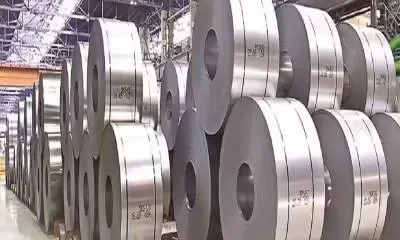
 Uncategorized3 weeks ago
Uncategorized3 weeks ago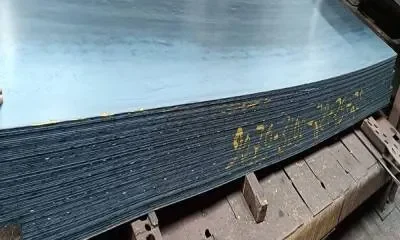
 Uncategorized3 weeks ago
Uncategorized3 weeks ago

